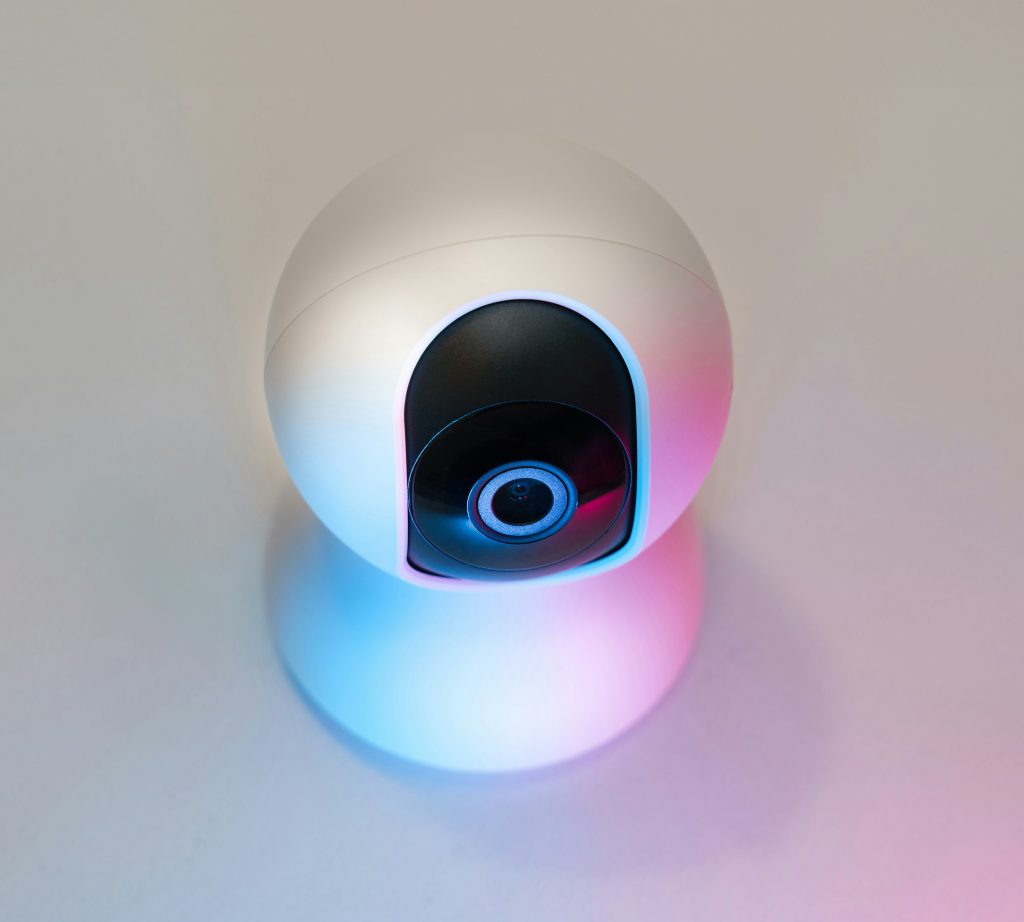Boeing’s Starliner Capsule Concludes Historic Mission Amidst NASA’s Next Steps
In a significant development for space exploration, Boeing’s Starliner capsule, having completed its inaugural crewed test flight, successfully returned from the International Space Station (ISS) on Saturday. The mission, which began on June 5, saw the Starliner carry two experienced NASA astronauts, marking a pivotal moment in the ongoing collaboration between Boeing and NASA. The return of the Starliner comes after a nearly three-month stay in orbit, during which it demonstrated critical capabilities necessary for future missions.
As the capsule undocked from the ISS, a series of springs propelled it away, initiating the final phase of its journey back to Earth. The spacecraft’s descent was closely monitored, with Boeing expressing confidence in the Starliner’s landing capabilities in New Mexico, despite NASA’s cautious stance regarding the craft’s reliability for crew transportation. The significance of this mission cannot be understated, as it not only represents a technical achievement for Boeing but also crucially tests the spacecraft’s systems under real operational conditions.
NASA has outlined plans for three additional operational Starliner missions, although decisions regarding further commitments remain pending. This uncertainty reflects the broader challenges faced by Boeing in the development and deployment of its spacecraft, as it seeks to regain trust following earlier setbacks.
The successful return of Starliner is a promising step forward, suggesting that the spacecraft can play a vital role in NASA’s future missions to the ISS and beyond. As the agency prepares to chart its course for upcoming explorations, the fate of the Starliner program may hinge on the results of ongoing evaluations and the performance of the capsule in subsequent missions. With the potential for more crewed missions on the horizon, the space community watches closely, hopeful for the next chapter in this ambitious endeavor.
Tags: Boeing, NASA, Space Travel, Starliner, Starliner return
NASA Turns to SpaceX as Boeing’s Space Capsule Delays Astronauts’ Return from ISS
In a surprising twist in the ongoing saga of space exploration, NASA has announced that it will employ SpaceX’s Dragon capsule to bring home two astronauts who have been stuck aboard the International Space Station (ISS) since early June. Sunita Williams and Barry Wilmore were initially expected to complete an eight-day mission; however, complications with Boeing’s new spacecraft have led to an unexpected extension of their stay in orbit, now projected to last until February 2025.
The decision comes amidst growing concerns regarding the safety and reliability of Boeing’s spacecraft, which has faced significant setbacks during its development. NASA’s risk assessment indicated that the potential hazards involved in utilizing the troubled capsule for the astronauts’ return were deemed too high. This has sparked a wave of scrutiny regarding Boeing’s capabilities in the competitive landscape of space travel.
Since June 6, Williams and Wilmore have been conducting scientific experiments and maintaining the ISS, but the prolonged absence from Earth has raised questions about the impact on their physical and mental health. NASA’s intervention to secure a SpaceX return underscores the urgency of their situation and the agency’s commitment to ensuring the safety of its personnel.
The reliance on SpaceX, which has rapidly advanced in the realm of commercial spaceflight, highlights the shifting dynamics within the aerospace sector. Boeing, once a dominant player, now finds itself in a precarious position as it grapples with technical challenges and the consequences of delays. Employees from Boeing have expressed feelings of humiliation and disappointment following the decision, as the company’s reputation is put to the test amid fierce competition.
As the situation unfolds, it raises critical questions about the future of manned space missions, the reliability of commercial partners, and the overarching goals of NASA’s Artemis program. With the aim to return humans to the Moon and eventually Mars, ensuring the safety of astronauts is paramount. The reliance on SpaceX may pave the way for a new era of collaboration between private companies and government agencies, but it also puts pressure on Boeing to rectify its shortcomings.
The astronauts’ journey continues to be closely monitored, and NASA is working diligently to ensure that the eventual return home is safe and efficient. As they wait for their ride back, Williams and Wilmore remain committed to their work aboard the ISS, contributing to humanity’s understanding of life in space.
Tags: Astronauts, Astronauts stuck in Space, Boeing, International Space Station, NASA, SpaceX
Alaska Airlines 737 MAX 9 Incident Sparks Safety Concerns Over Manufacturing Practices
In January, a harrowing incident involving an Alaska Airlines 737 MAX 9 raised significant alarm regarding the safety and manufacturing standards of commercial aircraft. During a routine flight, a door-sized fuselage panel unexpectedly blew out midair, creating a near-catastrophic situation for passengers and crew. This alarming event has prompted a thorough investigation into the manufacturing processes employed by Boeing, the aircraft’s manufacturer.
Preliminary findings indicate that the blowout was caused by a combination of two distinct manufacturing issues, which have yet to be publicly detailed as investigations continue. The consequences of this incident extend beyond the immediate danger to those aboard the flight; it has escalated scrutiny on Boeing’s quality control measures and overall commitment to maintaining high safety standards.
Officials from the National Transportation Safety Board (NTSB) have become increasingly involved, emphasizing the critical need for rigorous oversight in the aviation industry. The incident has reignited debates about the adequacy of safety protocols, particularly in light of previous concerns surrounding the Boeing 737 MAX series, which has faced its share of controversies in recent years.
As investigations unfold, aviation experts and safety analysts are calling for a comprehensive review of Boeing’s production processes. They argue that this incident could be indicative of broader systemic issues within the company’s manufacturing operations. The aviation community is on high alert, aware that the ramifications of such failures can be dire, not just for the airline involved but for the entire industry.
Furthermore, this incident has implications for regulatory bodies tasked with ensuring passenger safety. With increasing pressure on these organizations to enforce stringent safety measures, there may be a shift in how aircraft manufacturing is monitored. The potential for regulatory changes could lead to more robust guidelines that all manufacturers must adhere to, ensuring that the safety of passengers remains the paramount concern.
In response to the incident, Alaska Airlines has stated it is cooperating fully with investigators and is committed to ensuring the safety of its fleet. The airline has reassured passengers that rigorous checks are in place to prevent such occurrences in the future. However, the damage to consumer trust is already palpable, and airlines may find themselves needing to take additional measures to reassure the flying public.
As the investigation progresses, industry analysts are closely monitoring Boeing’s response and the potential repercussions for the company. The outcomes may influence future aircraft designs and manufacturing processes, setting new standards for safety in the aviation sector. It is a critical moment for Boeing, as the company seeks to regain its footing and restore confidence among airlines and passengers alike.
In conclusion, the incident involving the Alaska Airlines 737 MAX 9 serves as a stark reminder of the importance of rigorous safety standards in aviation. As investigations continue, the spotlight remains on Boeing and the broader aviation industry to ensure that such a dangerous occurrence is not repeated. The aviation world watches with bated breath, hopeful for a resolution that prioritizes the safety and well-being of all passengers.
Tags: 737 MAX 9, Alaska Airlines, aviation safety, Boeing, Manufacturing Standards
NASA Turns to SpaceX as Astronauts Await Return from Space
In an unprecedented turn of events, NASA has announced its decision to rely on SpaceX to bring two astronauts back to Earth after they have been stranded aboard the International Space Station (ISS) since early June. Originally intended for a brief eight-day mission, the astronauts, who have been living and working in microgravity, will face an extended stay in space that could last until February 2025.
The astronauts, who have been dubbed pioneers in this extended mission, are now in a situation that underscores the significant challenges of space travel. Sunita Williams and Barry Wilmore were expected to return home much earlier, but a series of complications with Boeing’s new spacecraft have led to a delay that is raising concerns among experts and the public alike. The decision to send them home on a SpaceX Dragon capsule is a significant shift in NASA’s strategy, reflecting ongoing issues with Boeing’s CST-100 Starliner, which has faced multiple delays and technical problems.
NASA’s announcement highlights the importance of having multiple partners in the private sector to ensure the safety and success of missions to low Earth orbit. The agency’s decision not to use the troubled Boeing capsule for the return journey emphasizes its commitment to astronaut safety, opting instead for the proven reliability of SpaceX’s technology. This move not only reflects NASA’s adaptability but also signals a growing reliance on commercial spaceflight solutions to fulfill its human spaceflight objectives.
The astronauts are currently conducting scientific experiments and maintaining the ISS, contributing valuable data that will benefit future missions, including those targeting Mars exploration. However, the psychological and physical challenges of an extended stay in space are considerable. As they await their return, they must also manage the rigors of prolonged microgravity, which can have lasting effects on the human body.
This incident also raises questions about the future of space partnerships and the balance between government contracts and private enterprise. As NASA looks to the future, it must navigate the complexities of these relationships while ensuring that its astronauts are not put at risk.
As the countdown to their eventual return begins, the space community watches closely, eager to learn from this experience and improve upon the existing technologies and operational protocols. The collaboration between NASA and SpaceX may set a precedent for future missions and highlight the importance of reliable space transportation systems.
In conclusion, the journey of Williams and Wilmore serves as a reminder of the unpredictability of space exploration and the need for robust contingency plans. As they prepare for their eventual homecoming, their story will undoubtedly inspire future generations to reach for the stars, illustrating the triumphs and trials of human endeavor in the vastness of space. The partnership between NASA and commercial spaceflight companies like SpaceX is a pivotal step towards a sustainable future in space exploration, ensuring that no astronaut is left behind and that the quest for knowledge continues unabated.
Tags: Astronauts, Astronauts stuck in Space, Boeing, International Space Station, NASA, SpaceX
NASA’s Bold Decision: Astronauts to Return Home via SpaceX Amid Boeing’s Starliner Setbacks
In a significant turn of events for the aerospace industry, NASA has opted to rely on SpaceX for the safe return of two astronauts stranded aboard the International Space Station (ISS) after their initial journey on Boeing’s Starliner capsule. This decision highlights the ongoing challenges faced by Boeing in its quest to establish a reliable crew transportation system.
NASA’s announcement comes as the agency grapples with the implications of using the Starliner capsule, which has been plagued by technical difficulties and safety concerns. The astronauts, Barry “Butch” Wilmore and Sunita “Suni” Williams, who initially made their journey to the ISS aboard the Starliner, will now have to wait until February for their return trip on a SpaceX spacecraft, demonstrating a significant setback for Boeing’s space ambitions.
The situation has raised questions about Boeing’s ability to deliver on its commitments in the competitive space industry, where reliability and safety are paramount. NASA’s choice to sidestep Boeing’s Starliner for the upcoming mission underscores the growing confidence in SpaceX’s capabilities, especially after the successful crewed missions that have already taken place.
This situation is not just a matter of logistics; it reflects broader industry dynamics where established aerospace companies like Boeing are facing increasing scrutiny over their operational capabilities. The decision to use SpaceX instead of Boeing for this critical mission may also have future implications for contracts and partnerships in the space exploration arena.
As the aerospace community watches closely, Boeing’s challenges with the Starliner could have long-lasting effects on its reputation and market position. With the company already facing a series of setbacks in other areas, including the 737 MAX crisis, this new development poses further questions about its leadership in the space sector.
The astronauts’ extended stay on the ISS is also a reminder of the complexities involved in human spaceflight, where unexpected challenges can arise, leading to delays and changes in plans. While the astronauts remain safe aboard the ISS, their situation illustrates the unpredictable nature of space missions and the importance of having reliable transportation options available.
Looking ahead, NASA’s decision serves as a strong endorsement of SpaceX’s capabilities, which have been consistently demonstrated through their successful missions. The company has established itself as a key player in the commercial spaceflight industry, offering innovative solutions and a proven track record in crewed space missions.
As the landscape of space exploration continues to evolve, it will be interesting to see how Boeing responds to these challenges and what measures it takes to regain confidence from both NASA and the wider aerospace community. The stakes are high, and the pressure is on for Boeing to deliver a safe and reliable spacecraft that can meet the demands of future missions.
In the meantime, the partnership between NASA and SpaceX is likely to strengthen, with both entities focusing on the shared goal of advancing human space exploration and ensuring the safety of astronauts in the process. As we move into a new era of space travel, the dynamics between traditional aerospace giants and innovative newcomers will undoubtedly shape the future of space exploration.
In conclusion, while NASA’s decision marks a significant moment for both Boeing and SpaceX, it also highlights the critical importance of safety and reliability in the realm of human spaceflight. The eyes of the world are on the aerospace industry as it navigates these challenges and seeks to inspire the next generation of explorers.
The road ahead will require resilience, innovation, and a commitment to excellence from all parties involved as they work together to push the boundaries of what is possible in space.
Tags: Astronauts, Boeing, NASA, SpaceX, Starliner





